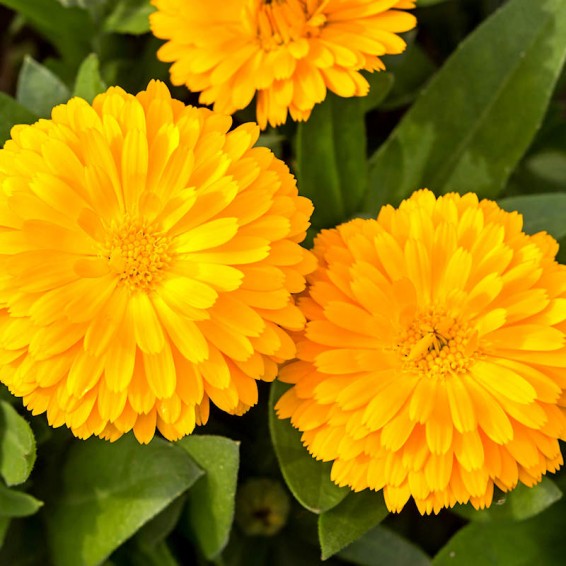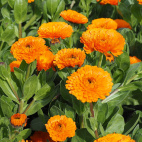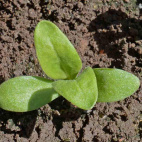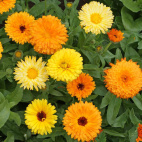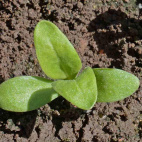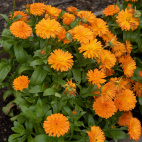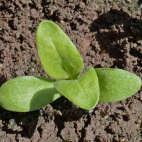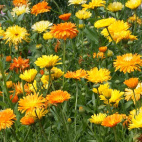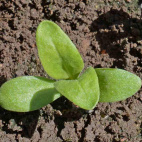Bon Bon Yellow Calendula Seeds
- HOW TO GROW
- FAST FACTS
- REVIEWS
HOW TO GROW
Sowing: Direct sow in fall or early spring, planting 1/4" below the surface. To start seed indoors, plant 1/4" deep in individual pots or a flat; keep evenly moist and at a temperature of 60-65 degrees until germination, which should take place within 5-10 days. Transplant or thin seedlings.
Growing: This plant can adapt to almost any soil, but prefers well-drained, poor or average soil. Since this plant prefers cool temperatures, it will appreciate filtered shade. Once established, it does not need regular watering; for the best blooms it should not be over-watered. To keep the plant bushy and neat, occasionally pinch off the tops of the developing stalks. If deadheaded regularly, it will produce profuse blossoms all season long; in hotter regions, it may stop blooming in the heat of summer and begin again in fall. This plant will readily reseed itself. Calendula can also be grown in containers.
Harvesting: For fresh flowers, cut the stems long and place them in water immediately. For culinary use, cut flower heads that have just opened; spread them out away from direct sunlight to dry completely, turning them occasionally. When the flowers are crisp and dry, store them in an airtight container for up to a year. The dried petals can be used in place of saffron, or as a garnish to add color and spice to dishes.
Seed Saving: When the developing seed turns from green to pale tan and easily comes loose from the head, remove the seed heads. Spread them out to dry away from direct sunlight, then thresh them to separate the seed from the husk. Store the seed in a cool, dry place.
FAST FACTS
Latin Name: Calendula officinalis
Species Origin: Southern Europe
Type: Garden Flowers
Life Cycle: Annual
USDA Zones: 1, 2, 3, 4, 5, 6, 7, 8, 9, 10, 11, 12
US Regions: California, Mountain, Arid/Desert, Plains/Texas, Midwest, Northern, Northeast, Southeast
Seeds per Ounce: 4,560
Stratification: No Stratification
Germination Ease: No Stratification
Sunlight: Full Sun, Part Sun
Height: 10 Inches
Color: Yellow
Bloom Season: Blooms Early Summer, Blooms Late Summer, Blooms Early Fall
Uses: Aromatic, Cut Flowers
Totally reliable seller
Always good fresh seeds. No chaff, no garbage, no short count.
DESCRIPTION
HOW TO GROW
Sowing: Direct sow in fall or early spring, planting 1/4" below the surface. To start seed indoors, plant 1/4" deep in individual pots or a flat; keep evenly moist and at a temperature of 60-65 degrees until germination, which should take place within 5-10 days. Transplant or thin seedlings.
Growing: This plant can adapt to almost any soil, but prefers well-drained, poor or average soil. Since this plant prefers cool temperatures, it will appreciate filtered shade. Once established, it does not need regular watering; for the best blooms it should not be over-watered. To keep the plant bushy and neat, occasionally pinch off the tops of the developing stalks. If deadheaded regularly, it will produce profuse blossoms all season long; in hotter regions, it may stop blooming in the heat of summer and begin again in fall. This plant will readily reseed itself. Calendula can also be grown in containers.
Harvesting: For fresh flowers, cut the stems long and place them in water immediately. For culinary use, cut flower heads that have just opened; spread them out away from direct sunlight to dry completely, turning them occasionally. When the flowers are crisp and dry, store them in an airtight container for up to a year. The dried petals can be used in place of saffron, or as a garnish to add color and spice to dishes.
Seed Saving: When the developing seed turns from green to pale tan and easily comes loose from the head, remove the seed heads. Spread them out to dry away from direct sunlight, then thresh them to separate the seed from the husk. Store the seed in a cool, dry place.
FAST FACTS
Latin Name: Calendula officinalis
Species Origin: Southern Europe
Type: Garden Flowers
Life Cycle: Annual
USDA Zones: 1, 2, 3, 4, 5, 6, 7, 8, 9, 10, 11, 12
US Regions: California, Mountain, Arid/Desert, Plains/Texas, Midwest, Northern, Northeast, Southeast
Seeds per Ounce: 4,560
Stratification: No Stratification
Germination Ease: No Stratification
Sunlight: Full Sun, Part Sun
Height: 10 Inches
Color: Yellow
Bloom Season: Blooms Early Summer, Blooms Late Summer, Blooms Early Fall
Uses: Aromatic, Cut Flowers
Reviews
Review
Totally reliable seller
Always good fresh seeds. No chaff, no garbage, no short count.
Also Consider These:
-
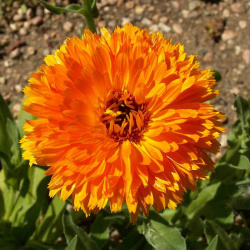 Ball's Orange Calendula Seeds
Calendula officinalis
These stunning 3" double blooms are a deep orange hue with the classic Calendula aroma, which acts as a natural mosquito repellant. This easy-to-grow annual is lovely as a cut flower or as a garnish.Quick View$3.48 Pkt - $7.09 / Oz
Ball's Orange Calendula Seeds
Calendula officinalis
These stunning 3" double blooms are a deep orange hue with the classic Calendula aroma, which acts as a natural mosquito repellant. This easy-to-grow annual is lovely as a cut flower or as a garnish.Quick View$3.48 Pkt - $7.09 / Oz -
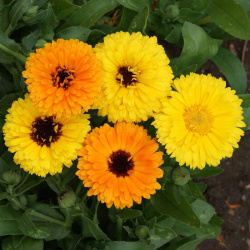 Fiesta Gitana Calendula Seed Mix
Calendula officinalis
A frost-hardy annual, this bushy clump-forming plant will flower all summer. The plants also give off a lovely Calendula fragrance that acts as a natural mosquito repellant. The easy-to-grow annual is attractive as a cut flower or a garnish.Quick View$3.48 Pkt - $7.27 / Oz
Fiesta Gitana Calendula Seed Mix
Calendula officinalis
A frost-hardy annual, this bushy clump-forming plant will flower all summer. The plants also give off a lovely Calendula fragrance that acts as a natural mosquito repellant. The easy-to-grow annual is attractive as a cut flower or a garnish.Quick View$3.48 Pkt - $7.27 / Oz -
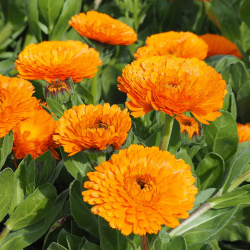 English Marigold Seeds
Calendula officinalis
A favorite around the world, this brilliant orange flower will brighten any garden. The sunny annual blooms all summer, and has a distinctive fragrance that naturally repels mosquitos.Quick View$3.48 Pkt - $7.09 / Oz
English Marigold Seeds
Calendula officinalis
A favorite around the world, this brilliant orange flower will brighten any garden. The sunny annual blooms all summer, and has a distinctive fragrance that naturally repels mosquitos.Quick View$3.48 Pkt - $7.09 / Oz -
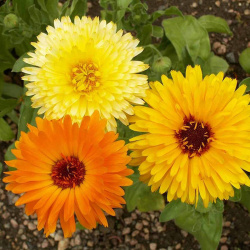 Pacific Beauty Calendula Seed Mix
Calendula officinalis
If choosing a calendula color is a problem, then this lovely mix of orange, yellow, and cream flowers is just for you! The calendula fragrance will naturally repel mosquitos from your garden as well! The easy-to-grow annual is lovely as a cut flower or a garnish.Quick Viewx
Pacific Beauty Calendula Seed Mix
Calendula officinalis
If choosing a calendula color is a problem, then this lovely mix of orange, yellow, and cream flowers is just for you! The calendula fragrance will naturally repel mosquitos from your garden as well! The easy-to-grow annual is lovely as a cut flower or a garnish.Quick ViewxPacific Beauty Calendula Seed Mix
Calendula officinalis
If choosing a calendula color is a problem, then this lovely mix of orange, yellow, and cream flowers is just for you! The calendula fragrance will naturally repel mosquitos from your garden as well! The easy-to-grow annual is lovely as a cut flower or a garnish.
$3.48 Pkt - $7.01 / Oz





